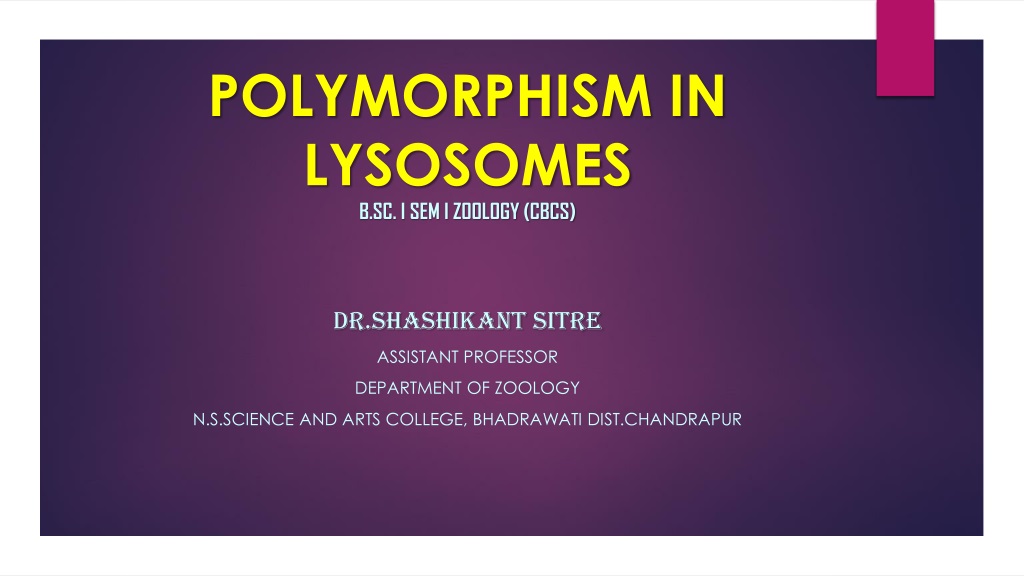

0 likes | 154 Vues
Lysosomes exhibit polymorphism with four distinct types - Primary Lysosomes, Heterophagosomes, Autophagosomes, and Residual Bodies. Each type plays a specific role in cellular digestion and nutrient recycling, showcasing a dynamic range of functions within cells.

E N D
POLYMORPHISM IN LYSOSOMES B.SC. I SEM I ZOOLOGY (CBCS) DR.SHASHIKANT SITRE ASSISTANT PROFESSOR DEPARTMENT OF ZOOLOGY N.S.SCIENCE AND ARTS COLLEGE, BHADRAWATI DIST.CHANDRAPUR
The Lysosomes shows Polymorphism. A Variety of lysosomes can be observed in different cells or within a single cell. It has been differentiated into four types.
1. PRIMARY LYSOSOMES These are also called Storage Granules, Protolysosomes or Virgin lysosomes. Primary lysosomes are newly formed organelles bounded by a single membrane and typically having a diameter of 100 nm. They contain the degradative enzymes which have not participated in any digestive process. Each primary lysosome contains one type of enzyme.
2. HETEROPHAGOSOMES They are also called heterophagic vacuoles or phagolysosomes. Heterophagosomes are formed by the fusion of primary lysosomes with cytoplasmic vacuoles containing extracellular substances brought into the cell by any of a variety of endocytic processes e.g. phagocytosis or pinocytosis. The digestion of the engulfed substances takes place by the enzymatic activities of the hydrolytic enzymes of the secondary lysosomes. The digested material has low molecular weight and readily passes through the membrane of th lysosomes to become the part of the matrix.
3. AUTOPHAGOSOMES They are also called autophagic vacuole, cytolosysomes or autolysosomes. Primary lysosomes are able to digest extracellular structures including mitochondria, ribosomes, perioxisomes and glycogen granules. Sucj autodigestion of cellular organelles is a ormal process during cell growth and repair.
4. Residual Bodies They are also called telolysosomes or dense bodies. Residual bodies are formed if the digestion inside the food vacuole is incomplete. Incomplete digestion may be due to absence of some lysosomal enzymes. The undigested food is present in the digestive vacuole as the residues and may take the form of whorls of membranes, grains , amorphous masses, ferritin like mass or myelin figures. Residual bodies are large, irregular in shape and are usually quite electron dense.